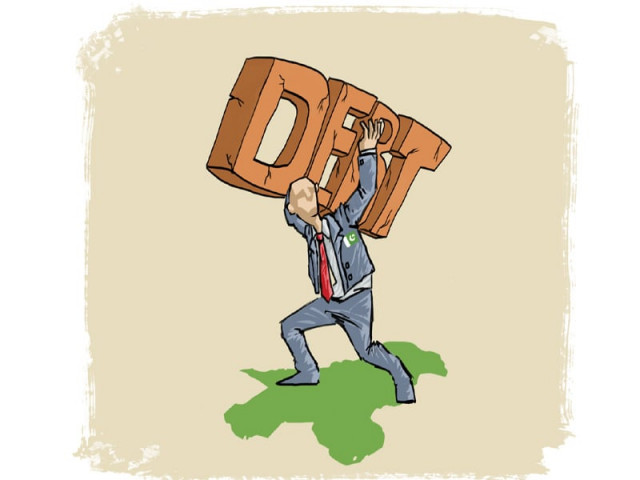Vicious cycle
Higher debt ratios can be manageable if the country has ability to repay debt, which is not true in Pakistan’s case.

Pakistan’s total debt, comprising both internal and external loans, has soared to record highs and currently stands at about 68 per cent of GDP. ILLUSTRATION: JAMAL KHURSHID
The country is already in a vulnerable position with our dependence on inflows of foreign exchange. The circular debt is crippling the economy. We are treading dangerously when it comes to the energy situation where we literally have to shut down one part of the economy to power another.
This may not seem serious considering that there are countries that have debt-to-GDP ratios that are much higher. Take for example, the United States with a debt-to-GDP ratio of about 100 per cent and Japan with a ratio of 233 per cent. But this is nothing new. Japan has had enormous debt for years following its stock market and real estate crash of the early 1990s, and — as is the case with the United States — Japanese government bonds still yield next to nothing. Higher debt ratios can be manageable, but if the country and its economy have the ability to repay the debt, which is not true in Pakistan’s case.
We have been — for a while now — in a situation where debt servicing eats up a substantial portion of our financial resources every year. The lack of development spending, and the focus on defence spending, debt financing and non-development expenditures of a top-heavy government and bureaucracy is the recipe for this disaster. We are headed towards a situation where we will have no choice but to take on new debt to retire old. This will leave precious little for development and infrastructure spending. Let us not even talk about already ignored sectors such as education, health and social development. It is a vicious cycle.

If the current situation continues unchanged and debt continues to outpace GDP growth, Pakistan once again faces a very real chance of defaulting. It is sad that our greatest burden, the war on terror and the negative impact it has had on our economy, may be the only thing that saves us in the end. Pakistan’s involvement in the war on terror and the US presence in Afghanistan will guarantee that Washington will continue to bail us out, for now.
Published in The Express Tribune, January 24th, 2013.















COMMENTS
Comments are moderated and generally will be posted if they are on-topic and not abusive.
For more information, please see our Comments FAQ